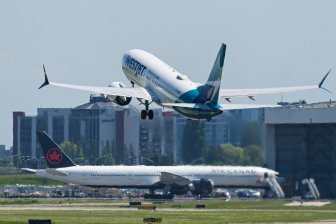How does suburban sprawl in Edmonton affect taxes and affordability? Should the city do something to limit new suburban neighbourhoods?

Those questions were on the table during an urban planning committee meeting Tuesday as city councillors heard from speakers and city staff about what the city calls a “growth management framework.”
The concept boils down to this: construction in new, suburban neighbourhoods should be discouraged until existing neighbourhoods have reached “substantial completion” and have all the amenities they need to be a complete neighbourhood.
The city defines a complete neighbourhood as having enough houses built, retail stores operating and green space. Other metrics being considered are schools, libraries, fire halls and transit services.
The conversation focused on taxes as the City of Edmonton is in a nearly half-billion-dollar hole when it comes to renewing roads, sidewalks and other city facilities.
Spreading out and increasing the city’s inventory of roads and sidewalks, instead of building where they already are, is a recipe for being further entrenched in debt, according to Ward Dene Coun. Aaron Paquette.

“We are nowhere close with our tax rate just to maintaining services. We either have to increase taxes by almost double to get to even — because right now we’re bleeding money and bleeding services as everyone can obviously tell — or we have to find a new formula,” he said.
A study done by the city found that focusing new housing in existing neighbourhoods would lead to property taxes going down by eight per cent.
“By adding dwellings to established areas and phasing growth in new areas, the City can ensure existing infrastructure is used more efficiently and amenities including community recreation facilities, transit facilities and parks can be fulfilled before taking on more commitments,” the city said.
However, infill homes can sometimes cost more, per square foot, than new homes on the edge of the city — meaning some buyers are going where they can stretch their dollar the furthest.
Other speakers said if Edmonton doesn’t build suburban communities, those residents will move to nearby cities and towns and travel in, using Edmonton’s roads and facilities without contributing property tax dollars.
“There’s a premise that if we push them out of south Edmonton, they’re going to go to infill. No, they’re not,” Ward. pihêsiwin Coun. Tim Cartmell said.
“Market forces say they’re going to go to the outer regions and start building on the outside edges of Beaumont.”

There were also concerns from the housing development industry that any barriers to development could lead to a shortage in supply.
“Canada is suffering from a structural housing crisis with the fewest homes per capita of any G7 country,” said Kalen Anderson, a former Edmonton city planner and executive director of the Urban Development Institute, an organization that represents developers in the Edmonton region.
She cited a Canada Mortgage and Housing Corporation (CMHC) study that found that 5.8 million new housing units need to be built by 2030 in order to meet the demand of a growing population across the country – 3.5 million more homes than the 2.3 million that would be built under normal circumstances.
“As Canada’s fifth-largest city region, Edmonton needs to move quickly to fill this gap,” Anderson said.
In the framework proposed Tuesday, developers would get a lead time of five years to plan for a new suburb, but that is not enough time to create a new suburb if the housing market demands it, according to industry representatives.
“I don’t want to build any more neighbourhoods further south of the ones that might still not have the capacity to bring amenities to, but that doesn’t mean we don’t plan,” Cartmell said.
But Ward papastew Coun. Michael Janz thinks those needed homes should be built in redeveloping neighbourhoods within Anthony Henday Drive.

“Every time we put a new house out in the suburbs in a new wetland and not in the core of our city where we have the services, we have the schools, we have the roads, we have the libraries, we have the amenities, we know that that house will lose the taxpayer money,” Janz said.
“If you want to see lower taxes, if you want to see a more sustainable city – not just environmentally, but economically – a city that’s more exciting, that’s more vibrant, that has more things to do, that has better services, we need substantial completion.”
The discussion on substantial completion ran past the allotted time on the agenda and debate is scheduled to finish Wednesday.




Comments